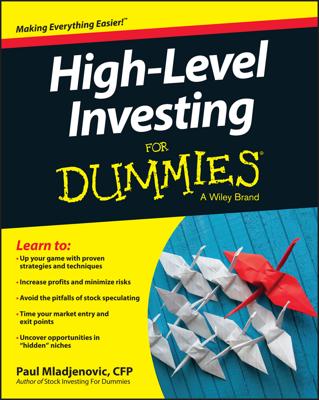Dollar cost averaging (DCA) is a splendid technique for buying stock and lowering your investment cost for doing so. It’s not uncommon for investors to see a total cost that reflects a discount to the market value. DCA works especially well with dividend reinvestment programs (DRPs).
DCA is a simple method for acquiring stock. It rests on the idea that you invest a fixed amount of money at regular intervals (monthly, usually) over a long period of time in a particular stock.
Because a fixed amount is going into a fluctuating investment, you end up buying less of that stock when it goes up in price and more of it when it goes down in price. Your average cost per share is usually lower than if you were to buy all the shares at once.
Say you decide to get into the DRP of the company Acme Elevator, Inc. (AE). On your first day in the DRP, AE’s stock is at $25, and the plan allows you to invest a minimum of $25 through its optional cash purchase (OCP) program. You decide to invest $25 per month and assess how well (hopefully) you’re doing six months from now. Here’s how this technique works:
| Months | Investment Amount | Purchase Price | Shares Bought | Accumulated Shares |
|---|---|---|---|---|
| 1 | 25 | 25 | 1 | 1 |
| 2 | 25 | 20 | 1.25 | 2.25 |
| 3 | 25 | 17.5 | 1.43 | 3.68 |
| 4 | 25 | 15 | 1.67 | 5.35 |
| 5 | 25 | 17.5 | 1.43 | 6.78 |
| 6 | 25 | 20 | 1.25 | 8.03 |
| Totals | 150 | N/A | 8.03 | 8.03 |
To assess the wisdom of your decision to invest in the DRP, ask yourself some questions:
How much did you invest over the entire six months? Your total investment is $150.
What’s the first share price for AE, and what’s the last share price? The first share price is $25, but the last share price is $20.
What’s the market value of your investment at the end of six months? You can easily calculate the value of your investment. Just multiply the number of shares you now own (8.03 shares) by the most recent share price ($20). The total value of your investment is $160.60.
What’s the average share price you bought at? The average share price is also easy to calculate. Take the total amount of your purchases ($150) and divide it by the number of shares you acquired (8.03 shares). Your average cost per share is $18.68.
Be sure to take note of the following:
Even though the last share price ($20) is lower than the original share price ($25), your total investment’s market value is still higher than your purchase amount ($160.60 compared to $150)! How can that be? You can thank dollar cost averaging. Your disciplined approach (using DCA) overcame the fluctuations in the stock price to help you gain more shares at the lower prices of $17.50 and $15.
Your average cost per share is only $18.68. The DCA method helped you buy more shares at a lower cost, which ultimately helped you make money when the stock price made a modest rebound.
DCA not only helps you invest with small sums, but also helps you smooth out the volatility in stock prices. These benefits help you make more money in your wealth-building program over the long haul. The bottom line for long-term stock investors is that DCA is a solid investing technique, and DRPs are a great stock investment vehicle for building wealth. Can you visualize that retirement hammock yet?
Dollar cost averaging is a fantastic technique in a bull market and an okay technique in a flat or sideways market, but it’s really not a good consideration during bear markets. If you plan on holding on to the stock long-term, then simply cease your dollar cost averaging approach until times improve for the stock.

